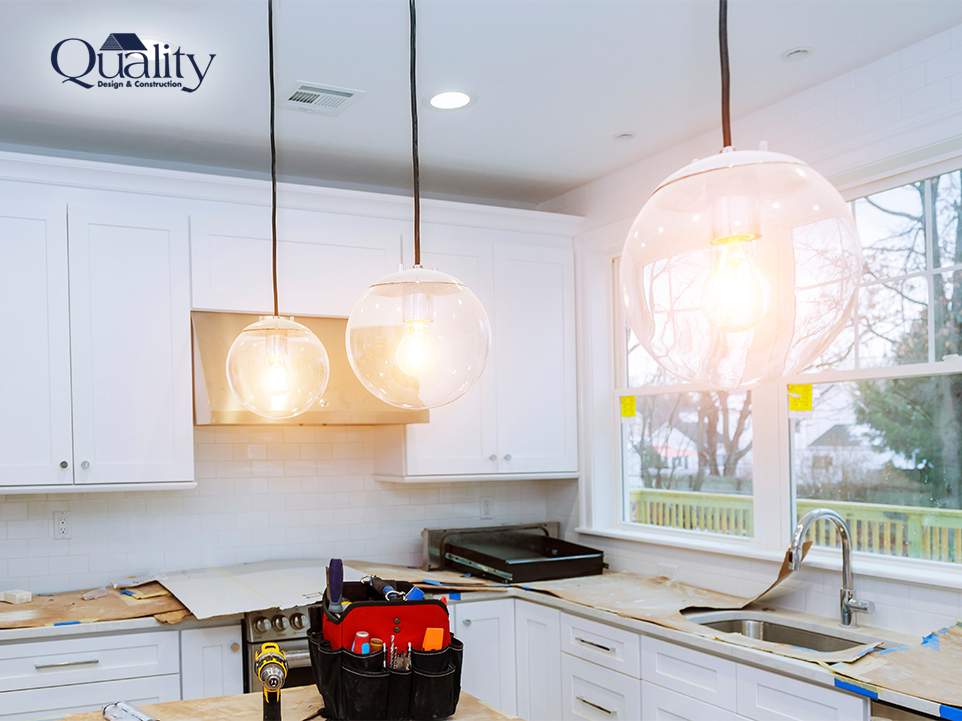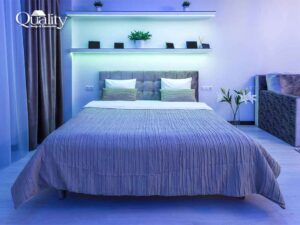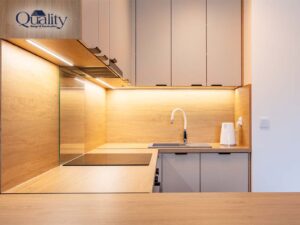Ever walk into your newly remodeled kitchen and think, “Why does it feel so… lifeless?” You’ve cleaned, organized, and maybe even added a plant or two. But something’s still missing.
Truth is, many kitchens feel dull not because of the layout or furniture but because of poor lighting. It feels like a minor thing, but it shapes everything, like how appetizing your food looks, how energized you feel, and even how long you want to hang out there.
It’s not just about brightness. It’s about temperature, layering, and choosing the right light quality. A mismatched tone or harsh overhead light can turn the heart of your home into a cold, sterile zone. And who wants to prepare dinner in such a place? Let’s explore how you can fix this issue:
Why is Light Temperature Important?
When we talk about light “temperature,” we don’t mean heat. It’s the color tone from warm yellow hues to cool icy blues. Measured in Kelvin, this small number has a huge impact.
A kitchen lit at 2700K (very warm) might feel like a warm, inviting space, but it won’t help you spot the bruises on an apple. Meanwhile, 5000K or above can be so harsh it makes the space feel uneasy.
Most homeowners find their sweet spot somewhere between 3000K and 4000K. That’s warm enough to feel welcoming but cool enough to give clarity on countertops.
What Really Works in Kitchens
The kitchen is a multitasking zone: meal prep, coffee chats, and late-night fridge raids. So, the lighting has to be flexible. 4000K lighting often keeps the best balance as it’s crisp, neutral, and doesn’t ruin color perception. This matters more than you might think.
Think about trying to inspect a piece of chicken under a dim yellow light. Doesn’t feel great, right? Obviously, No.
In kitchens with natural wood or rustic tones, some homeowners still prefer 3000K for its cozy glow. But for spaces with white cabinets, stone countertops, or modern finishes, 4000K adds a clean, fresh touch without being dull.
Smart vs Fixed Temperature Lighting
For fixed-temperature lighting, a solid 4000K LED is reliable and cost-effective. But if you want more control over the kitchen’s vibe, smart lighting might be your best friend. With smart bulbs, you can adjust both brightness and color temperature from your phone or a voice command.
You don’t need to go full “smart home” to enjoy this. Some budget-friendly bulbs let you switch between color temps manually. That flexibility can be a game-changer for how you use your kitchen day to night.
Layering Light
If you rely solely on overhead lighting, your kitchen might look flat and shadowy. Light layering is where the true difference happens. Think of your kitchen in zones: ceiling lights for general use, under cabinet lighting for task work, and accent or mood lighting to create atmosphere.
Ceiling lights should provide even, shadow-free coverage, ideally spaced out to avoid dark corners. Go for 4000K to keep the overall tone clean and energizing.
Under Cabinet lighting helps with careful tasks like chopping or measuring. Warm-to-neutral temps work great, especially if you’re trying to soften the look under harsh cabinetry.
And don’t skip mood lighting, regardless if it’s a small pendant over the sink or warm strip lights along the lower cabinets; these extras make your kitchen feel inviting and lived-in.
When we added under cabinet strips and dimmable pendants over our kitchen island, it felt like a whole new room. Even just grabbing a midnight snack became more relaxing.
Don’t Forget Dimming & Color Control
Kitchen lighting should shift with your needs. Sometimes, you want it bright and focused; other times, it is soft and ambient. That’s where dimmable lights are worth investing in.
With dimming, you can keep the same fixture and color temperature but adjust the intensity to suit your mood.
Bring the Heart Back into Your Home
At the end of the day, your kitchen isn’t just a place to cook. It’s where kids dump backpacks, where wine gets poured, and where leftovers are turned into comfort meals. It deserves light that feels like home.
Choosing the right lighting and temperature isn’t about trends; it’s about creating a comfortable functioning environment. The truth of how you live, how you feel, and how much joy that space can offer with just the right glow. Don’t settle for “it’s fine.” Your kitchen deserves better.
FAQs
Should I use warm white or cool white lights in the kitchen?
Use cool white (around 4000K) for task areas like counters and stoves and warm white (2700K–3000K) for dining nooks or ambient lighting.
Are smart lights good for kitchens?
Yes, smart lights allow you to adjust brightness and color temperature to match your mood and time of day.
Which brands offer the best kitchen lighting?
Reputable brands like Philips, Aurora, and Arc-LED provide high-CRI, long-lasting lighting solutions ideal for kitchen use.



